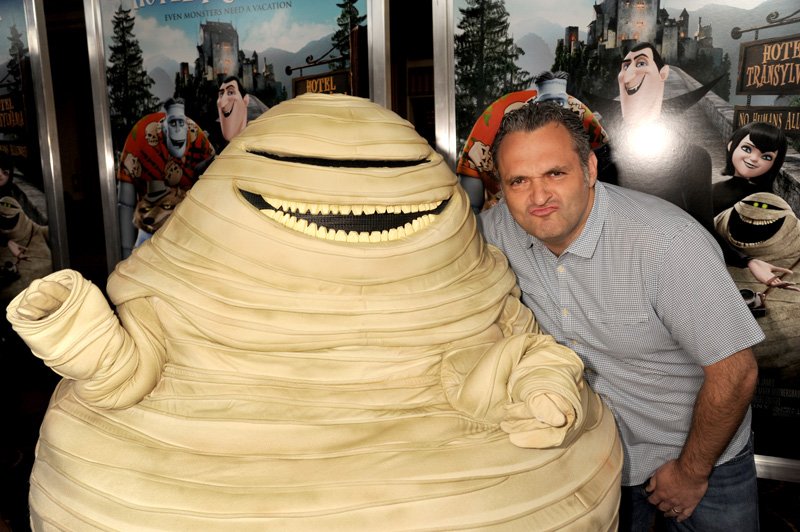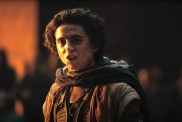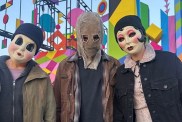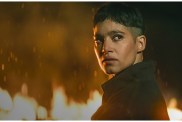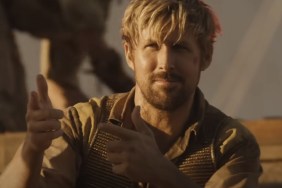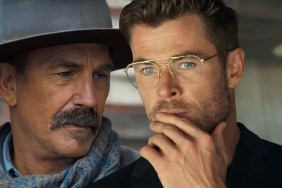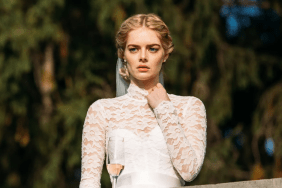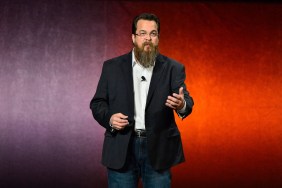ComingSoon.net was invited to a special presentation of footage for Sony Pictures Animation‘s upcoming sequel Hotel Transylvania 3: Summer Vacation. The footage we saw involved an opening set in the late 1800s with Abraham Van Helsing (Jim Gaffigan) pursuing the monsters on a train, as well as a modern day scene of Dracula trying to internet date and his daughter Mavis taking him and the other creatures on a vacation cruise. They arrive at the cruise ship via Gremlin Air, which is a ramshackle plane run entirely by mischievous Gremlins that falls apart before it crashes in the ocean. Once onboard the ship, they encounter the Bermuda Triangle, a giant Kraken, the fabled city of Atlantis (now a casino) and more. After viewing the footage, we got to have an exclusive conversation with Hotel Transylvania franchise director Genndy Tartakovsky, who discussed his work on the threequel along with his contribution to Iron Man 2, as well as his thoughts on finally finishing his cult TV show Samurai Jack!
In the July 13 release, Mavis surprises Dracula with a family voyage on a luxury monster cruise ship so he can take a summer vacation from providing everyone else’s vacation at the hotel, and the rest of Drac’s Pack cannot resist tagging along. The monsters are all having a great time, indulging in all of the shipboard fun the cruise has to offer, from monster volleyball to colossus sized buffets and exotic excursions, but then the unexpected happens as Drac falls for the intriguing-yet-dangerous captain of the ship. Balancing family, friends, and a budding romance might just be too much, even for the most powerful vampire.
The whole Drac pack is back this summer, including Dracula (Adam Sandler), Mavis (Selena Gomez), Johnny (Andy Samberg), Griffin the invisible man (David Spade), Wanda (Molly Shannon) & Wayne (Steve Buscemi) the werewolves, Murray the mummy (Keegan-Michael Key), Dennis (Asher Blinkoff), Frank (Kevin James) & Eunice (Fran Drescher), and Blobby.
New cast members this time out include Molly Shannon as Wanda, Kathryn Hahn as Ericka and Jim Gaffigan as Abraham Van Helsing.
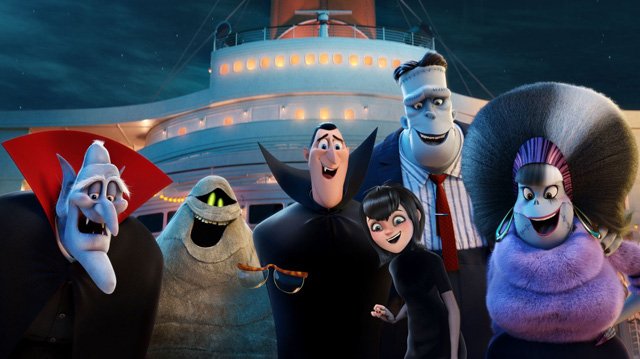
ComingSoon.net: Your last three features have all been in the “Hotel Transylvania” universe. Do they all start to blur together or do they feel very separate in your mind?
Genndy Tartakovsky: They’re separate in my mind. The third one especially so, because I got to write it with Michael McCullers, and it’s definitely been a different experience because I’m starting with my own ideas. I’m very animation specific in the stuff that I do, and I think this movie definitely reflects it.
CS: I’m sure when Michael McCullers sits down to write a screenplay it’s the way most people write a screenplay, but when you sit down to write a screenplay are you drawing out stuff first and approaching it from more of a visual angle?
Tartakovsky: Absolutely. Everything I do is to facilitate the animation. “This is a great opportunity for this type of animation!” That’s definitely the way I think, it started way back on “Dexter” and “Jack” where I go, “There’s two guys crossing a bridge,” and that becomes the whole story. This one was very similar. The good thing was Michael and I got together and talked about the whole story, then he ended up getting busy so I was able to write the first rough draft myself. So I just kinda dug in and said, “What have I always wanted to do?” and started putting together these crazy visual sequences. As the movie unfolded I started to realize, “This is more what I do.” I doodle a lot, and approach it with vignettes. “What would be a cool scene to illustrate this story idea?” Then I go from there.
CS: How do you translate that with Michael, who’s more of a traditional live-action screenwriter?
Tartakovsky: He’s definitely a better writer than I am, for sure. He then got my rough draft and went over it and added a lot of great gags to it, then we got it approved and went into storyboards. In live action there’s the movie you write, the movie you shoot and the movie you edit. They’re sometimes three very different things. This is a similar thing, where the movie you write might be good but once you start to draw it all these glaring errors start to come out. “Oh my God, this thing is too slow, we need more of this or more of that…” Now the visual language starts to shape and you work it all out visually.

CS: I just talked to another famous animation director who had a very compressed schedule on his film. How compressed was your schedule on “Hotel Transylvania 3”? Did you have room to breathe?
Tartakovsky: I feel like I’ve never had a schedule that’s like, “room to breathe.” (laughs) In this case, because we started writing in 2016, and the movie comes out in 2018 so it’s crazy fast. On the second movie we had 80 animators, on this movie at our highest we had 135 because the schedule was so compressed. Coming from television you’re so used to any kind of schedule. I know what it takes to get this done, and it is what it is. Those days of old Disney filmmaking where you have six years to really nurture every idea, they’re gone. Maybe at Pixar and Disney it still exists…
CS: They had six years on “Coco.”
Tartakovsky: Yeah, so there you go, and they have their different teams developing it, putting up the movie four times. For us it was like, “Here’s the script.” We put it up a couple times, then just started massaging it and then brought it to layout and animation and started rolling.
CS: Were you able to port over elements from the last film? Obviously you have similar designs, but were you able to use the same digital builds for the returning characters?
Tartakovsky: Yeah. It’s amazing. Imageworks does all the work, so they literally update all their systems every year. So all of our stuff was updated and had to be re-imported into all the new operating systems and the new technology. Because we’ve done two movies together they know what I want in terms of the cartoony animation and the way cloth works. They were able to adjust the systems, especially the rigging of the faces, which was SO HARD on the first movie, where literally the animators would sculpt every expression, and on this one they figured out a quicker way to do it. We re-used everything, but at the same time everything got updated with all the new equipment.
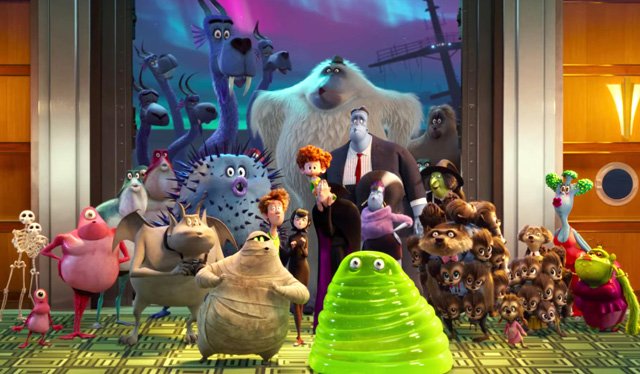
CS: When I look at the style of the animation and the style of the characters it has a very mid-century, 1960s feel to it like “Mad Monster Party” and “The Addams Family” and “The Munsters.” Were those some of the inspirations you drew from?
Tartakovsky: Yeah. The monster family for sure. I grew up on “The Munsters” and “Addams Family.” All that stuff was awesome. I’m a kid of the ’70s, so “Gilligan’s Island,” “Fantasy Island,” “Love Boat”… all that stuff was part of my vernacular. But the animation itself is definitely Warner Bros., Tex Avery, very Mad Magazine. I don’t know if you know who Harvey Kurtzman is?
CS: Of course! He created Mad, Help, Little Annie Fanny…
Tartakovsky: That’s right. So his drawing philosophy is a big inspiration to the way I draw in my own stuff and informs the animation.
CS: He had a very squash-and-stretch drawing style.
Tartakovsky: Yeah, it’s very loose but very dynamic. We always said that “Hotel T” is silly, it’s funny. There’s all different types of comedies, right? You’ve got “When Harry Met Sally,” you’ve got “Airplane,” but they’re all different. In animation you’re almost like, “You can only do this.” You can have a little comedy and a lot of heart. I wanted to do more of a “Dumb and Dumber,” crazy, cartoony thing. Still has heart in it, but you can see that there’s physical comedy everywhere. It’s weighed the other way.
CS: Since you are more directly involved in crafting the story for this one, how would you say the third one is different from the other two?
Tartakovsky: It’s got much more adventure. I’ve been calling it a comedic spectacle. (laughs) Once you see the scope of the whole movie, it’s big, it’s at 11. Especially once you get to the ending it gets to be out of control. The first two were much more grounded in their own way, which is fine. The first one was discovering the hotel, so it was a lot more location-based, and the second one was to see the funny world of humanity against monsters, so it was making fun of suburbia and stuff. This one is, you’re diving into the monster vacation world like Bermuda Triangle, Atlantis, all the stuff we saw.
CS: Did you do a lot of deep dive research into these subjects or was it more surface-y?
Tartakovsky: We’re making a joke of it so it doesn’t have to be super authentic, but on the stack of ships in the Bermuda Triangle I looked to see which ones were iconically known to be lost, so the main battleship in World War I that got lost there and some other ones.

CS: I know you worked briefly as a storyboard artist on “Iron Man 2.”
Tartakovsky: Yes.
CS: Could you talk a little bit of that experience? Because that was a very famously fraught production, where they didn’t know the first one would hit that big and had to kind of rush the film out in less than 2 years.
Tartakovsky: It’s funny because the way that whole thing came together was at that time I had my own studio and it was rough to get work at the time. I went over to Marvel and said, “I have my own studio, I could do some animated Marvel shows like I did with ‘Clone Wars.'” The conversation switched to Jon Favreau, they said, “Jon is a big fan of yours, and he referenced ‘Samurai Jack’ when they were shooting the first movie. You should give him a call.” I was like, “Okay.” So then I called Jon, we got together for lunch, and he started to say, “Yeah, I was looking at your ‘Samurai’ stuff and the way you were staging action and you have the right sensibility because it has a little humor and cool action. I don’t know how it would all work but would you help me on ‘Iron Man 2’ with action?” And I was like, “Yeah, sure.” I wasn’t just a storyboard guy. Jon brought in me and this guy Brian Andrews, who does a lot of boards for me, and gave us the third act. He said, “This is what has to happen story-wise…”
CS: At the Stark Expo.
Tartakovsky: In the Pavilion, yeah! So we put together a whole beat sheet of what could happen, pitched it to Jon, he made adjustments, then we started boarding it. I had my own pre-vis team so I got in the suit and shot my own pre-vis. It was all in a small room where it just reads you digitally, and then they put the stuff on you in the mathematically correct environment. It was amazing. I got to do all the fighting, then I shot myself, picked the cameras, then I edited it with sound and I presented it to Jon. It was very guerilla style for a big multi-million dollar movie like that. I was surprised with how guerilla it was, which I was fine with because I love doing that anyways. I presented it to him, he loved it, and then I got to do some second unit stuff.
CS: Oh wow.
Tartakovsky: But addressing the speed issue you’re talking about, it’s crazy. We’re going fast, but then I see how Jon had to deal with it and it’s rough because they’re rewriting the script DAILY. On the set, off the set, it’s like a constant organic process. It seems completely backwards because it seems when you have this super high budget effects movie you’d want to pre-plan it out, right? It’s never like that. Maybe it’s more like that now, but maybe they hadn’t figured out the formula back then. And because Jon’s a great actor, and Robert Downey Jr. and an organic process to it which feeds the story and back and forth. It was really interesting to see it, but then what I learned was this is exactly the same stuff that I do except in animation.
CS: Since you already had your foot in the door there have you ever been tempted or met with them about directing one of their features?
Tartakovsky: Early on they talked about “Thor” a little bit, but then I think I was too green for them to feel comfortable with that. Then I just kind of stayed away. I think if I pitched them a take on something maybe there would be a conversation, but I know Kevin [Feige] and we had a great experience on “Iron Man 2” but I haven’t gone back.
CS: Do you harbor any desire to do live action?
Tartakovsky: I do, sure. The line is blurred now between live action and animation…
CS: Especially if you look at something like “Ready Player One” which is 2/3rds an animated movie.
Tartakovsky: Right, or look at “Avatar”! Or “Lord of the Rings.” So it has to be the right thing, and I had such a good experience finishing “Jack” that I was like, “Whatever I do next is gonna be original.” So right now I’m solely focused on things that I come up with, and maybe it’s live action, maybe it’s animation, we’ll see.
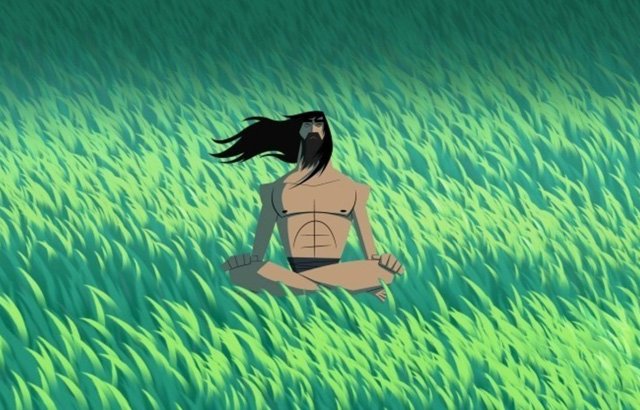
[SPOILER WARNING for those that have not seen “Samurai Jack Season 5 yet]
CS: I have to say I got the box set of the complete “Samurai Jack” last year. I’d missed Season 5 when it aired, so I got to just watch it all in one big gulp, and it’s one of the best things in live action or animation I’ve ever seen. It has a real resonance to it. It’s startling and emotional and bittersweet, everything you would ever want. And obviously you got to take it up a notch and gear it more towards adults. Now that it’s behind you, how do you feel? Do you have postpartum depression?
Tartakovsky: (laughs) The response to it was amazing, so that part of it was great. Towards the end it was one of the hardest things to finish. It’s a dramatic, Shakespearian story so it can’t be a happy ending. Somebody had to lose, and at one point I thought, “Maybe I should kill Jack?” But then I couldn’t do it. What the whole story was about was I wanted to make people feel love in animation. Not in a “Little Mermaid” type of way but in a more sophisticated kind of way, and then to feel loss. Right? So I gave it a shot and it’s really about that, and I get some sh*t towards the end. I think I got sh*t more for the dramatic choice that I made. It’s time parallax and all that, so when she went back to the past she didn’t die off IMMEDIATELY. I waited a little bit until after they got married, so it’s more of a dramatic death at the wedding. I was surprised because it’s the internet, because everybody has a voice. When you’re playing with time everyone has their own critical opinions of it.
CS: As Rian Johnson found out recently with “The Last Jedi,” anytime you take something that’s been in people’s consciousness for a long time they have their own version in their head.
Tartakovsky: That’s exactly right, that’s one of the biggest things I had to deal with. When we started out I even said, “We can never make this as good as the show because people grew up with it as kids and have their own perception of it.” We just have to do what we do and believe in it, and I am the creator of it, so this is what I think. (Laughs) But I think it did work, and there were some episodes in there that I’m super proud of.
CS: At the end of the day it can’t be everything, it has to be something, and I think you killed it.
Tartakovsky: Thank you.
Hotel Transylvania 3
-
Hotel Transylvania 3: Summer Vacation

-
Hotel Transylvania 3: Summer Vacation

-
Hotel Transylvania 3: Summer Vacation
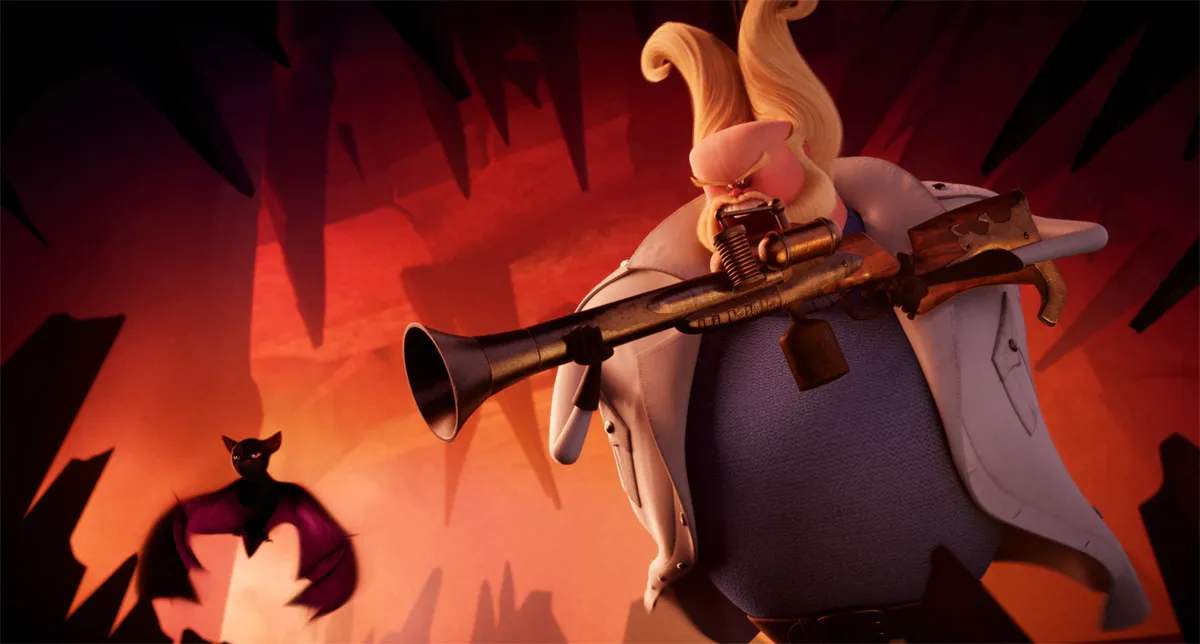
-
Hotel Transylvania 3: Summer Vacation
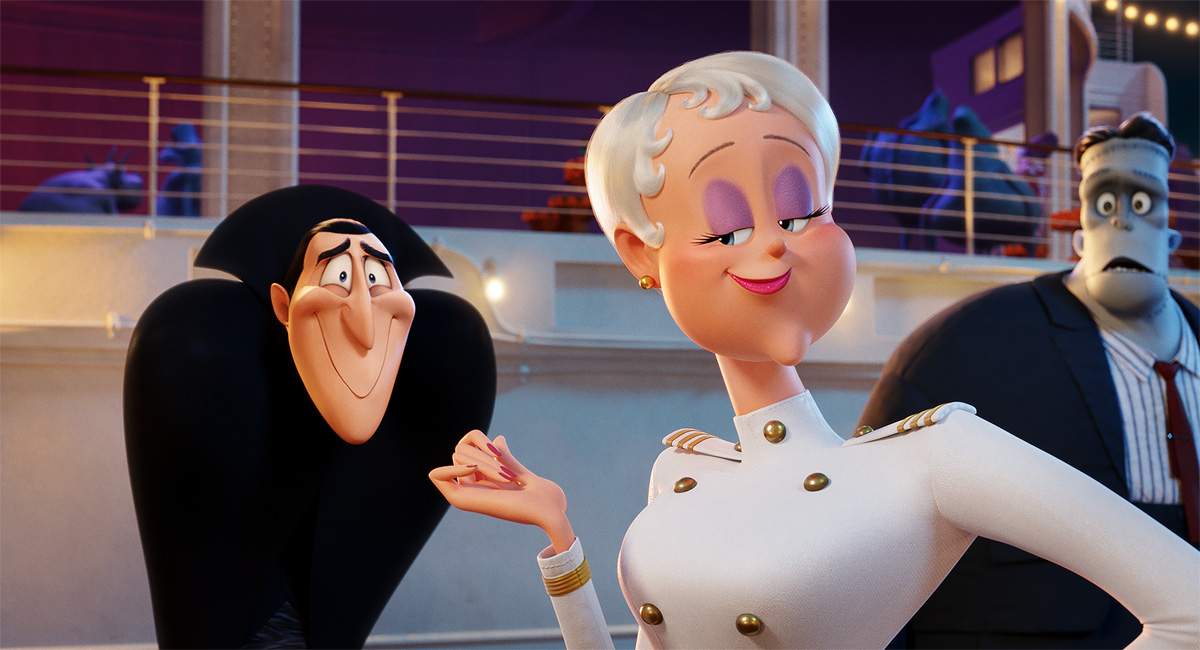
-
Hotel Transylvania 3: Summer Vacation

-
Hotel Transylvania 3: Summer Vacation

-
Hotel Transylvania 3: Summer Vacation

